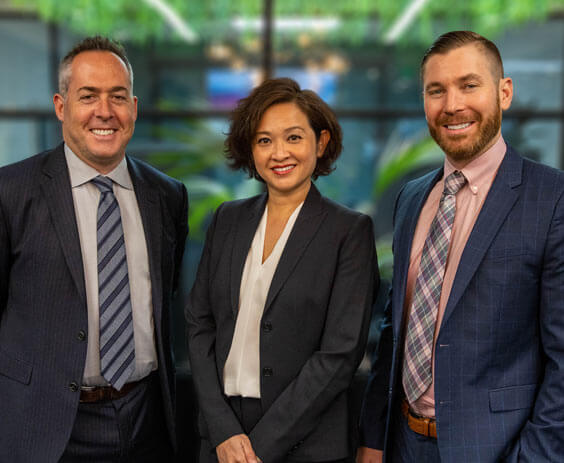Have you ever been stuck in a massive traffic jam on the 405? Picture this: you’re barely moving, and then suddenly, you’re in a minor car accident. It’s not entirely your fault, but will the law agree? That’s where the world of comparative fault laws comes in.
Here in Orange County, these laws don’t just decide who caused the accident. They also play a big part in figuring out how much money you might receive if you’ve been in a crash. It’s pretty complicated stuff.
Whether you’re driving or dealing with the aftermath of an accident, it’s essential to understand how these rules affect you. That’s where Kohan & Bablove Injury Attorneys’ car accident lawyers step in, offering guidance to help you through these challenging times.
Understanding Comparative Fault Laws
Comparative fault laws, sometimes called shared responsibility rules, can seem like a maze. But they’re crucial to car accident cases. In essence, these laws help determine who’s at fault in an accident and by how much.
If you’re involved in a crash where both parties share blame, don’t panic. Don’t worry if you’re not getting total compensation after a collision where both parties are at fault. Under comparative fault rules, your damage award is reduced by the percentage of your negligence.
This system might feel unfair if you believe the other party was more responsible for the crash. But it’s not all bad news – let’s use Orange County as an example because its law follows ‘pure’ comparative negligence principles.
In this scenario, even if you were 99% at fault for the accident – say due to distracted driving – you could still claim 1% of damages from another driver if they contributed just that tiny bit to causing the incident.
The Role of Comparative Fault in Car Accident Cases
Determining liability in car accident cases often involves assigning comparative fault or apportioning blame among involved parties. In car crash cases, it can get complicated.
Let’s use an analogy – think of it like splitting the bill at dinner. If you order more food, you pay more. Similarly, if you’re found more responsible for the accident than others, you shoulder a more significant percentage of blame and potentially higher costs.
Pure vs. Modified Comparative Fault
In ‘Pure’ states, anyone hurt in an accident can recover damages minus their share of responsibility, no matter how high it is. So even if they were 90% at fault, they could still claim 10% from other parties.
‘Modified’ rules are stricter. They limit recovery options when someone’s share of blame exceeds a certain threshold (usually around 50%). So if your slice of guilt pie was too big – say over half – sorry, but there won’t be any leftovers for claims against others.
Comparative Fault Law’s Impact on Orange County Car Accident Cases
In the realm of car accidents in Orange County, comparative fault laws hold significant sway. These laws affect both liability and compensation outcomes.
California Civil Code 1714(a), a prime example of these laws, states that everyone is responsible for their actions. So, if you’re involved in an accident, your behavior comes under scrutiny, too.
Navigating Comparative Fault: A Balancing Act
Understanding CA Jury Instructions (CACI), No. 405, can be invaluable as it explains how this balance sheet of blame works.
If found partly at fault, don’t despair. Even with some percentage pinned on you, compensation isn’t entirely off the table – just reduced proportionately by your ‘share’ of responsibility.
Navigating a Car Accident Case under Comparative Fault Laws
Car accidents can be complex, especially when comparative fault laws come into play. In Orange County, understanding these laws is critical to navigating your case successfully.
To begin with, remember that the compensation you receive may decrease if you’re found partly at fault for the accident. This reduction mirrors your percentage of blame according to comparative negligence rules.
Gathering Evidence Is Crucial
Collecting strong evidence is essential in any car accident case. It’s even more crucial when comparative fault comes into play because this evidence helps establish who was responsible for what.
This might involve gathering witness statements or obtaining video footage from nearby security cameras. Hiring an experienced personal injury attorney like those at Kohan & Bablove Injury Attorneys could ensure that all relevant facts are brought forward.
Future Implications of Comparative Fault Laws
As laws change, so do the rules about who is at fault in car accidents. With more self-driving cars on the road, accidents caused by people might become less common. This could change how blame is figured out in these accidents.
New tech means new challenges, too. For example, if a self-driving car breaks down and causes a crash, who is responsible? The company that made the car or the person who owns it?
Laws are also changing in some states. For instance, in Florida and California, how much money you get after an accident depends on how much of the accident was your fault.
Kohan & Bablove Injury Attorneys, with their wealth of experience dealing with complex cases involving changing dynamics in Orange County’s traffic landscape, are well-equipped to guide clients through such situations. Get expert advice here.


